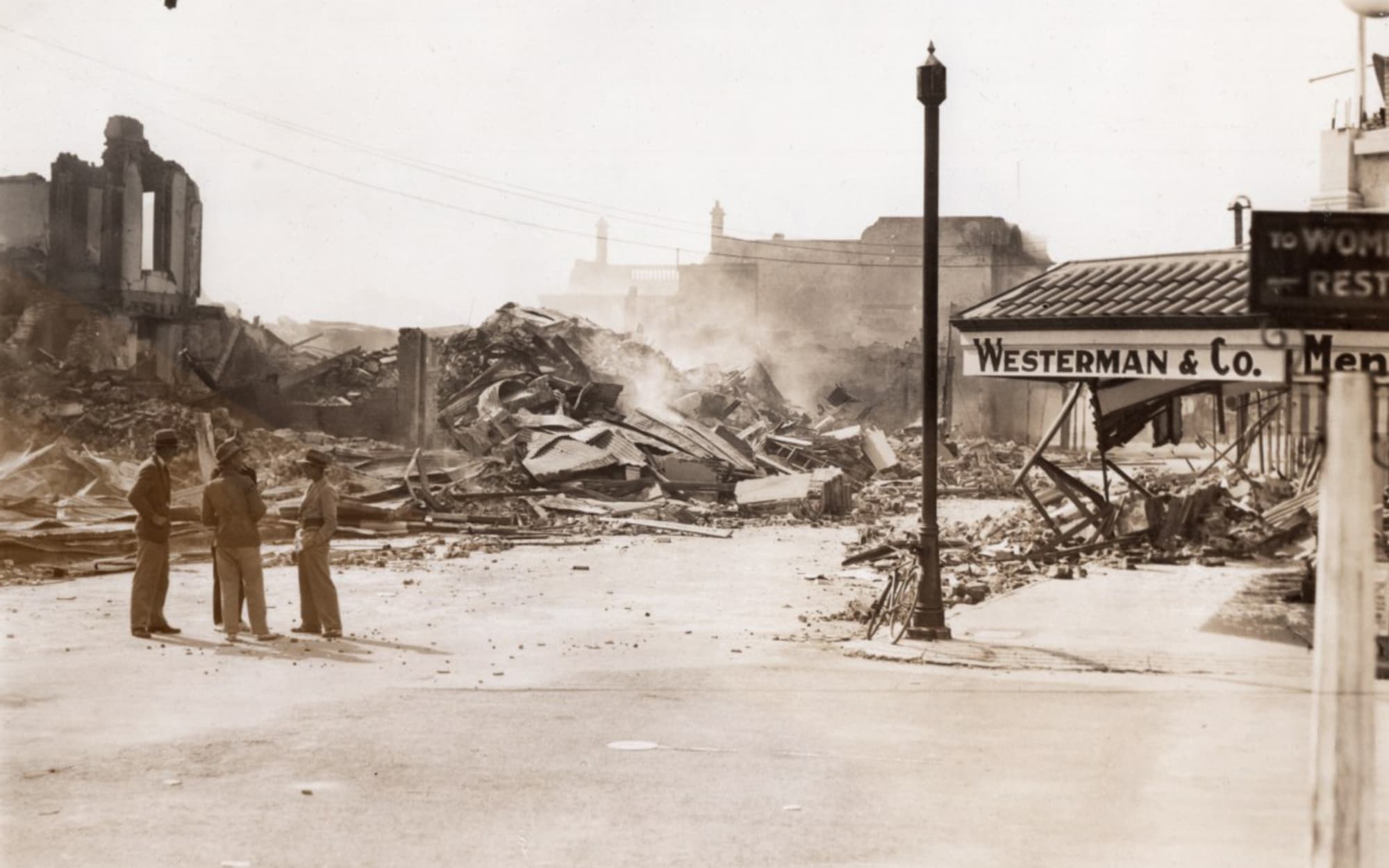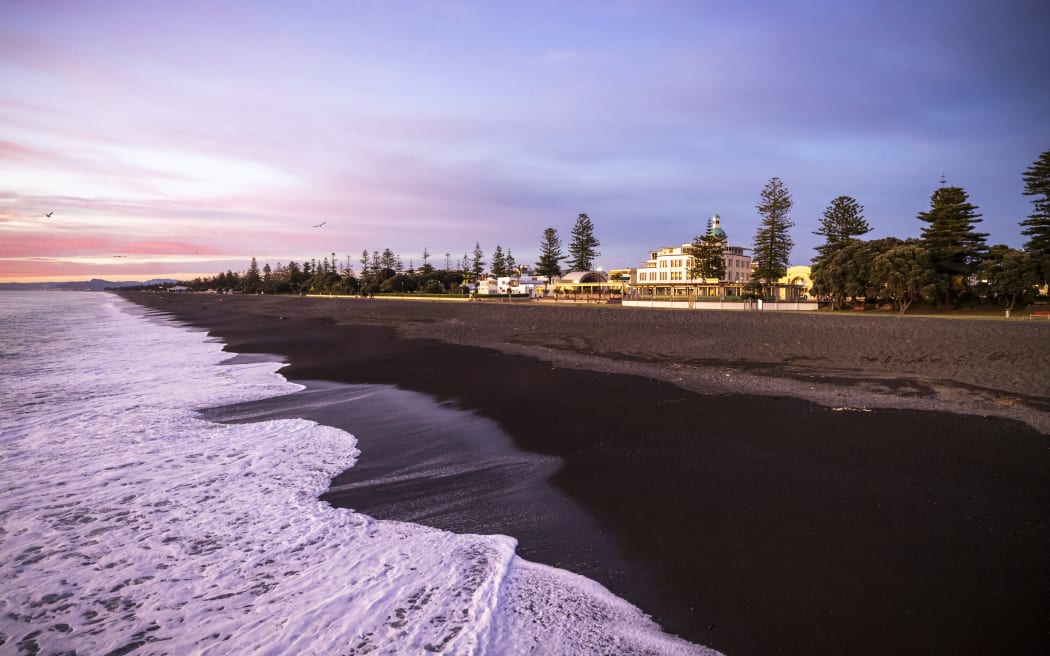I grew up on Mataruahou - Napier Hill. It’s a beautiful place – sunny, warm and usually calm. A naïve visitor would never know how natural disaster has shaped it.
“Torrential rain caused one of the most severe floods in the history of Hawke’s Bay. Thousands of acres are submerged, the loss of stock is severe. And families in many districts have been forced to abandon their homes. … In the Esk Valley, many acres of pasture are covered with silt. The main bridge on the Napier-Wairoa highway was washed out.”
This news excerpt could have been written in February, after Cyclone Gabrielle. But it’s actually taken from the Waikato Times, dated 26 April, 1938.
Mataruahou used to be an island. Surrounded by swamps and estuaries, it was connected to the mainland by two shingle spits.
That was until February 3, 1931, when a 7.8 magnitude earthquake caused a bolt of energy equivalent to 100 million tonnes of TNT detonating. It ran down a 'rupture zone' under the city – collapsing cliffs and permanently changing the landscape.
The harbour floor rose almost two metres and the sea receded away from Mataruahou – providing an additional 2200ha of buildable land.
That space allowed Napier to grow. Once considered unlikely to reach 30,000 residents, the city sprawled across the reclaimed area.

The 1931 earthquake devastated Napier, but also allowed it to grow. Photo: Duncan Miller Gallery
The earthquake defined the Napier that stands today. Tourists visit in droves to see the impressive collection of Art Deco architecture – in fashion at the time the city was rebuilt.
It dominated my primary school history lessons. We learned about the 2.5 minutes of shaking, and the fires that broke out afterwards. We studied the response in the days that followed – largely community driven and hampered by aftershocks.
In my grandparents’ house six photos hang on a wall – three showing the city before, and three after.
But that's not all that defines my hometown. Growing up, I was told we had the best weather in New Zealand. Now - having lived for 10 years in Wellington - I too tell people Napier has the best weather in New Zealand.
On Mataruahou, summer temperatures soar above 30 degrees. The elevation means winter frosts are rare, and any wind is usually a breeze.
My commute to school wove past apple orchards and vineyards. On campus we stole feijoas from trees in autumn and sweated through our woollen skirts from September to April.
In 2023, the elements struck again.
A quarter of Hawke’s Bay’s orchards – more than 2000ha – were badly damaged or destroyed. Vineyards were similarly wiped out.
Residents on Mataruahou were lucky. The floodwaters couldn't touch them, and the hill stood strong. But for others, it was a different story.

Slash on Napier's Marine Parade following Cyclone Gabrielle, February 2023. Photo: RNZ / Soumya Bhamidipati
Two hundred and eighty-seven properties were deemed unliveable across Hawke’s Bay, with a further thousand needing intervention to manage future events.
It’s not new – as the newspaper clipping, above, suggests – floods have plagued Hawke’s Bay for years. Napier is particularly vulnerable with its large areas of low-lying land – much of it reclaimed in the 1931 earthquake.
But when Cyclone Gabrielle tore through the city last February, it reminded residents of a vulnerability – one that can be easy to forget when you have some of the country’s best weather.
The climate is changing, and the storms are worsening. It may be a given that Mataruahou will get days hotter than 30 degrees in summer, or that low lying areas will experience crisp winter frosts. But how long will residents have before the next one-in-100-year flood? Or one-in-200, or even one-in-500? It's a near certainty now that climate change will wreak havoc on the area again.


